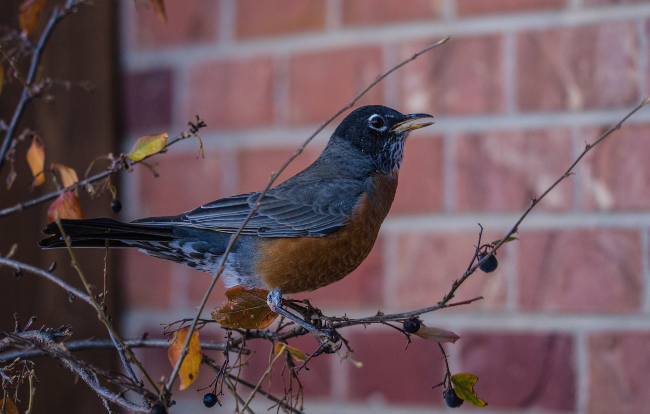We can protect our birds by making bird friendly homes and choices!
Psalms 50:11 “I know all the birds of the mountains. And the wild beasts of the field are Mine.”
The Creator God knows us, each one of us, personally and the above verse depicts His loving heart towards His creation. He knows all the birds of the mountains and every creature on the ground. He cares for them, and as His children and followers, we carry his redeeming and caring love towards the birds and insects that equally belong to the land we call our homes and communities.
Yet, it is shocking to realize that our homes and gardens, and our everyday choices have become a significant cause of death for these creatures. But these deaths are preventable. We will look at four significant dangers that our choices can cause to birds, and what action can be taken to protect them.
1) Prevent window collisions using Birdsavers on glass doors and windows
I often wondered about the “thud” sounds on our glass door, until I realized they were bird collisions. Most houses have glass windows and doors that are highly reflective. Birds tend to fly into the glass as it looks seamless with its reflection of the nature outside, and their tiny bodies with hollow bones get severely hurt. In fact, most such glass collisions end up in their death within a short time, even if they may be able to fly a bit after being hit or falling. It makes it more real if we can imagine ourselves flying at speed and crashing into a 10-story building.
Over 600 million birds are killed each year due to glass collisions in the US alone. Of these, 44% i.e., close to half the deaths are caused by homes and buildings 1-3 stories tall. Though this statistic is for the U.S., we can make an educated guess that this is true across the globe in most countries for homes with plain glass windows, that are highly reflective and dangerous to birds.
There are many easy ways we can prevent our homes from being the cause of bird collisions and deaths. The goal is to break the reflective image of our glass windows and doors using tapes, ropes or other images. I came across Collidescape that offers quite a few options such as tinting the windows, scenic images, and clear or patterned window tapes. I also liked the Acopian birdsavers (a.k.a, Zen Wind Curtains) made of paracord ropes which can be bought or made easily at home. All these options go on the outside of the glass and do not block our view from inside.

Another effective step would be to reduce the use of external and internal lighting of our houses during the night, so that migratory birds are not drawn to the lights causing subsequent risk of glass collision deaths.
2) Protect birds from cats by keeping them indoors
Cats have an innate instinct to kill small birds and an estimated 2.4 billion birds are killed by cats every year in the U.S. alone. We can prevent this by keeping them indoors or in outdoor enclosures called Catios. Another important way to advocate for greater impact is to support care for unowned cats that pose the greatest risk to bird deaths (causing 69% of bird deaths by cats).
3) Provide a healthy habitat and avoid using chemical pesticides
Providing a safe habitat starts with avoiding the use of harmful chemical pesticides and insecticides on our gardens, lawns, and houses. An alternative would be to use natural, biodegradable products that are safe for the environment and wildlife. A healthy habitat also calls for us to provide safe spaces for the birds through reducing the lawn space to include more layers in our yards through native trees, plants, bushes, shrubs, and groundcover. Flowering plants (such as sunflowers—for their seeds) and Berries (e.g., native snowberries in the PNW) provide a nutritious diet for birds. We have learnt to leave a few berries on our shrubs for the birds to enjoy. All these steps improve our soil health, thereby improving insect and worm life, and thereby providing for the birds and their young all year round.

4) Choose bird-friendly coffee
Nearly three-fourths of the coffee grown globally is done unsustainably, destroying forest and wildlife habitats and causing a significant decline in bird population. Along with use of pesticides, coffee is being grown in the sun to increase its speed of growth and fruit production. But the sun-grown coffee leads to the continued destruction of forest canopies, tress and depleted soil health, all of which create a loss of habitat for several types of wildlife and birds (learn more in the article here).
But bird-friendly coffee farming is expanding, where “coffee is grown as an understory shade crop protecting the existing foliage cover and tree diversity proven to provide quality habitat for birds and other wildlife.” (The Smithsonian’s National Zoo & Conservation Biology Institute). You can learn more about this topic here and also learn about buying bird-friendly coffee here. (For those of you who live in the U.S., Circlewood has a partnership with Camano Island Coffee Roasters).

All the ways discussed above are choices and actions that we can take to ensure we are doing our part in protecting and caring for birds, a beautiful reminder of God’s providence and care. Yet there is one last, yet very significant step remaining—to spread the word! Now that we are aware, we are equipped to share this information and be advocates for the protection of birds within our families, extended families, friend circles, churches, social groups, and our communities. Besides sharing what YOU DO, here is a handout from the Cornell Lab of Ornithology that you can share.
Vidhya
To leave a comment for Vidhya, click here.
You can watch Vidhya and her family making their own birdsaver strips here on her youtube channel, Wildly Wonderful World.